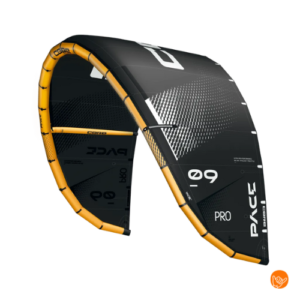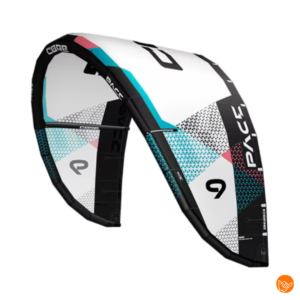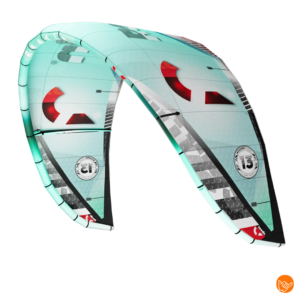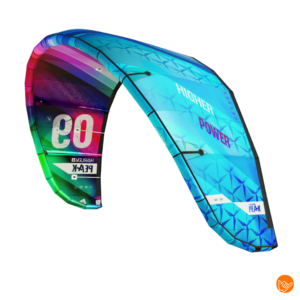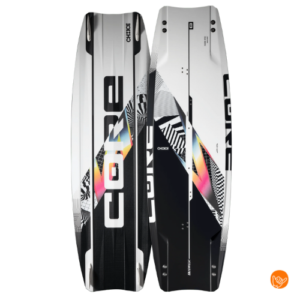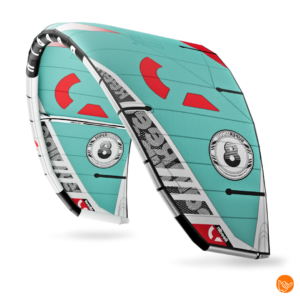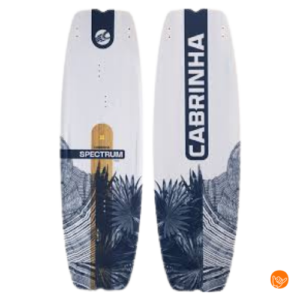As a beginner kitesurfer, you usually have a kite between 9-12 square meters needed, depending on your body weight and the prevailing wind conditions. Lighter individuals (60-75kg) often start with 9-10m kites, while heavier beginners (75-90kg) are better off with 11-12m kites. The right kite size beginner choice ensures safe learning and faster progress in your kitesurfing skills.
What determines what kit size you need as a beginner?
The right choose kite size depends on three crucial factors: your body weight, the wind strength at your kitesurfing location and your skill level. These three elements combine to determine which kitesurf size is optimal for your situation.
Your body weight is the basis for kite size calculations because more weight requires more pulling force to get on the water. Wind conditions vary daily and seasonally, requiring different kite sizes for optimal performance. Also, as a beginner, you need more stable, predictable kites than experienced riders.
The concept kite size is expressed in square meters (m²) and usually ranges between 6m² for strong winds to 17m² for very light winds. For beginners, the right size is crucial because:
- Kites that are too small do not give enough power to waterstart
- Oversized kites are difficult to control and dangerous
- The wrong size significantly slows down your learning process
- Safety comes first during your first kitesurfing sessions
How do you calculate the right kite size based on your weight?
For beginner kite size calculations use your body weight as a starting point and adjust for wind conditions. A general rule of thumb is: divide your weight in kilograms by 7-8 for moderate wind conditions (15-20 knots).
Practical calculation for beginners:
- Weight 60-70kg: start with 9-10m² kite
- Weight 70-80kg: choose 10-11m² kite
- Weight 80-90kg: start with 11-12m² kite
- Weight 90kg+: consider 12-13m² kite
Your body weight is the most important factor because it directly determines how much pull is needed to lift your body out of the water and keep it moving. More weight means more drag, thus more kite surface area to generate enough force.
These calculations are for standard all-around beginner kites in moderate wind conditions. In stronger or weaker winds, adjust the size accordingly. Remember, it is better to start a little too conservatively as a beginner than too aggressively.
What kit size do you need in different wind conditions?
Wind conditions directly affect your kitesurfing equipment beginner choice. In different wind strengths, you need different kit sizes to optimally kitesurf and stay safe.
Kite size table for different wind conditions:
- Light winds (10-15 knots): 12-15m² kites for more pulling power
- Moderate winds (15-20 knots): 9-12m² kites, ideal for beginners
- Strong winds (20-25 knots): 7-9m² kites for better control
- Very strong winds (25+ knots): 6-8m² kites, not recommended for beginners
As a beginner kitesurfer, you should ideally have access to at least two different kit sizes to handle different wind conditions. Most beginner kitesurfers have a 10-11m² kite for moderate winds and a 12-13m² kite for lighter days.
Wind conditions can change within a single session, which is why flexibility in your kite choice is essential. Many beginners underestimate the importance of the right size for prevailing conditions, which can lead to frustration or unsafe situations on the water.
What is the difference between beginner and advanced kitesurfers in terms of size?
Beginners usually have larger, more stable kites needed compared to advanced kitesurfers who prefer smaller, more responsive kites. This difference stems from different skill levels and riding objectives.
Key differences in kit size choice:
- Beginners: opt for larger sizes for more stability and margin for error
- Advanced: use smaller sizes for precision and maneuverability
- Beginners: focus on safety and ease of learning
- Advanced: prioritize performance and trick opportunities
As your skills improve, you will find that you become comfortable with smaller kites in similar wind conditions. Experienced riders can kitesurf with a 9m² kite where beginners need a 12m² kite, as they make more efficient use of wind windows and kite positioning.
Your kite size adjustments evolve gradually. Start with conservative, larger sizes and slowly work toward smaller, more advanced kites as your technique and confidence grow. This natural progression path ensures safe skill development.
What mistakes do beginners often make when choosing a kit size?
The most common error is choosing kites that are too small out of overconfidence or misjudgment of one's own skills. Beginners often think that smaller kites are easier to handle, when the opposite is true.
Common mistakes in kit size selection:
- Choosing a kite that is too small, making water starts impossible
- Focusing only on one kit size for all wind conditions
- Overestimating own skill level
- Misjudging or ignoring wind conditions
- No consideration of body weight in size determination
Another common mistake is ignoring local wind conditions. Many beginners buy kites based on general advice without considering their specific kitesurfing locations and seasonal wind patterns.
To avoid these pitfalls, it is wise to gain experience with different kit sizes before purchasing your own equipment. This will help you make the right choices based on actual experience rather than theoretical considerations.
For beginning kitesurfers who want to start smart without a large investment, a flexible subscription The opportunity to try out different kit sizes. You can test different sizes in different wind conditions, allowing you to learn exactly which sizes best suit your weight and skill level. Want to put together your ideal combination yourself? With our put together a set service you can configure the perfect kite, board and bar combination to fit your specific needs and budget. For personal advice on the right kite size for your situation you can always Get in touch with us - we will be happy to help you make the right choice for a safe and enjoyable start in kitesurfing.













